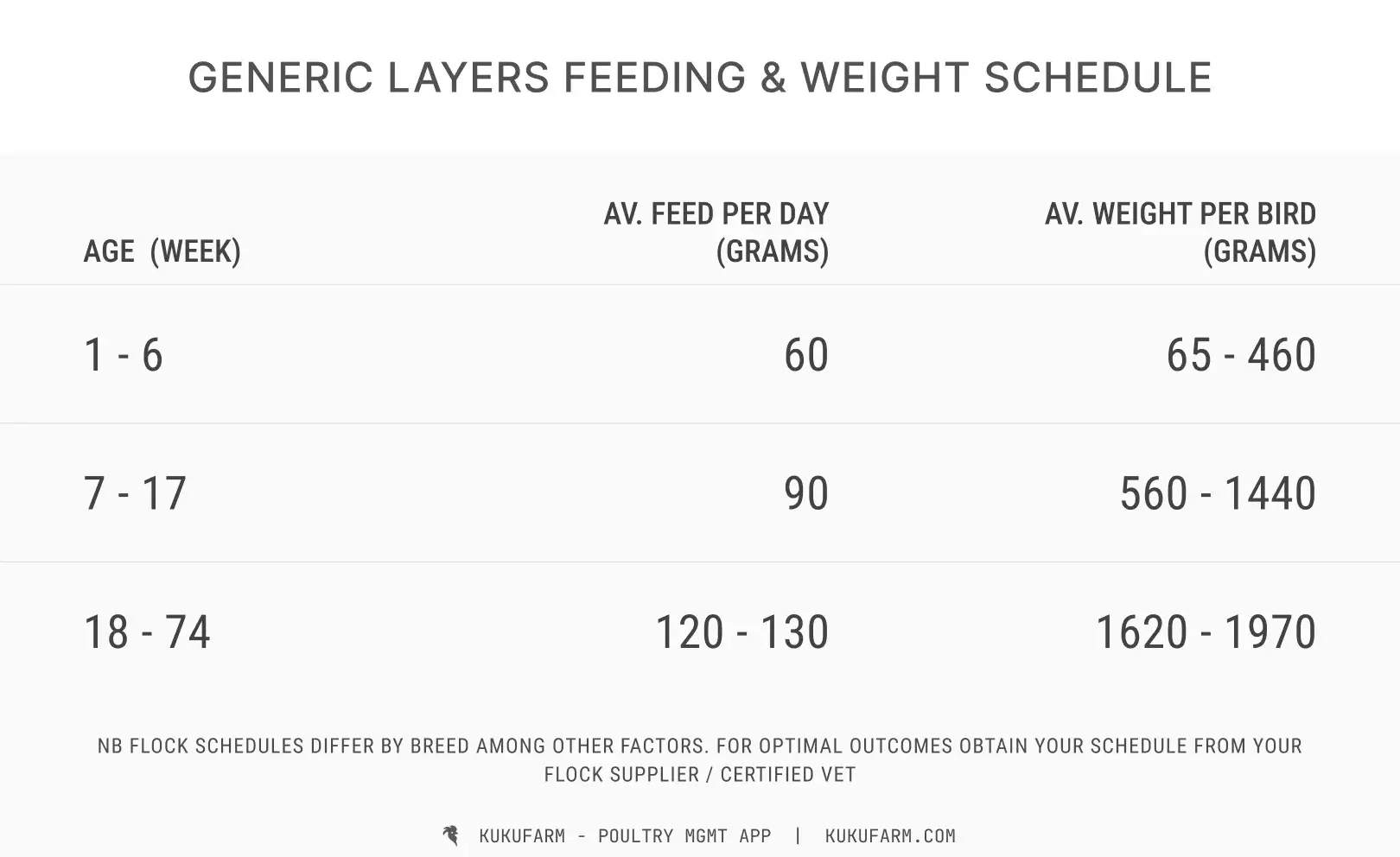Poultry records consist of at least 5 key datasets that determine a flock’s performance. Liveability, egg production rate, feed conversion ratio, bird weight, and financial returns.
These are briefly discussed below.
5 Elements of poultry records
1. Mortality / Liveability rate
A flock’s mortality rate is the percentage of birds that have died in a that flock. An 8% mortality rate means that 8% of birds in that flock have died.

A flock’s mortality rate also determines a flock’s survivability or liveability rate. Liveability rate is the percentage of birds expected to live to full age. A flock with a 8% mortality rate has a liveability rate of 92%.
A flock with a low mortality rate, and thus high liveability rate is a very likely to be a high performing and productive flock.
2. Egg production rate
Egg production rate (EPR) is the percentage of birds that produce eggs over a given time frame. For instance, daily, weekly, and monthly.

EPR is expressed in percentage. A flock with a daily EPR of 95% means that 95% of birds in that flock are laying eggs daily.

Most commercial layers flocks have well known EPR. Flock suppliers will usually inform farmers of their flock’s EPRs. A high performing flock will have a high EPR.
3. Feed conversion ratio
Feed conversion ratio or FCR is a measure of the efficiency by which birds convert food or body weight or output. Without measuring the weight of birds in a flock, it is impossible to calculate FCR. FCR can be calculated as:
FCR = Amount of feed consumed / Weight gained
OR
FCR = Amount of feed consumed / Mass output Output for a layers bird include both weight gained and eggs produced in a given period. A high FCR value means that the cost of feeding a flock is high. A low FCR value means the cost of feeding a flock is low.
FCR differs by country. As of 2011, in the US, a broiler maturing in 39 days had an FCR of 1.6. In the same year, a layers bird producing 330 eggs per year had an FCR of 2
4. Bird weight
In a way, FCR is also a way of tracking bird weight. Certainly, tracking bird’s weight is an important performance indicator for a flock. Underweight or overweight birds can suggest problems in flock rearing practices.
Below is a sample broiler flock feeding and weight tracking chart. You can also view a detailed version from Agrifarming.

Certain breeds and flock types have expected bird weight at different ages in their life. If you are a commercial poultry farmer, you can obtain this benchmark from your flock supplier, as part of the flock schedule.
A flock whose average bird’s weight is within expected ranges is likely to be a highly performing flock.
Kukufarm – poultry management app



5. Financial yield
At the end of the day, you will want to determine the financial viability of your flock.
A flock whose mortality rate is low, liveability rate is high, has a low FCR, and bird weight within expected ranges, high EPR, is very likely to be a very profitable flock.

Poultry records key takeaways
- Determining a flock’s performance is key to sustainable poultry farming
- Liveability rate, bird weight, egg production, feed conversion ration are key to determining a flock’s performance.
- Egg production rate of course only applies to layers flocks
- Flock records are the backbone of determining a flock’s performance
- Without a flock records, a farmer might as well be doing guess work



